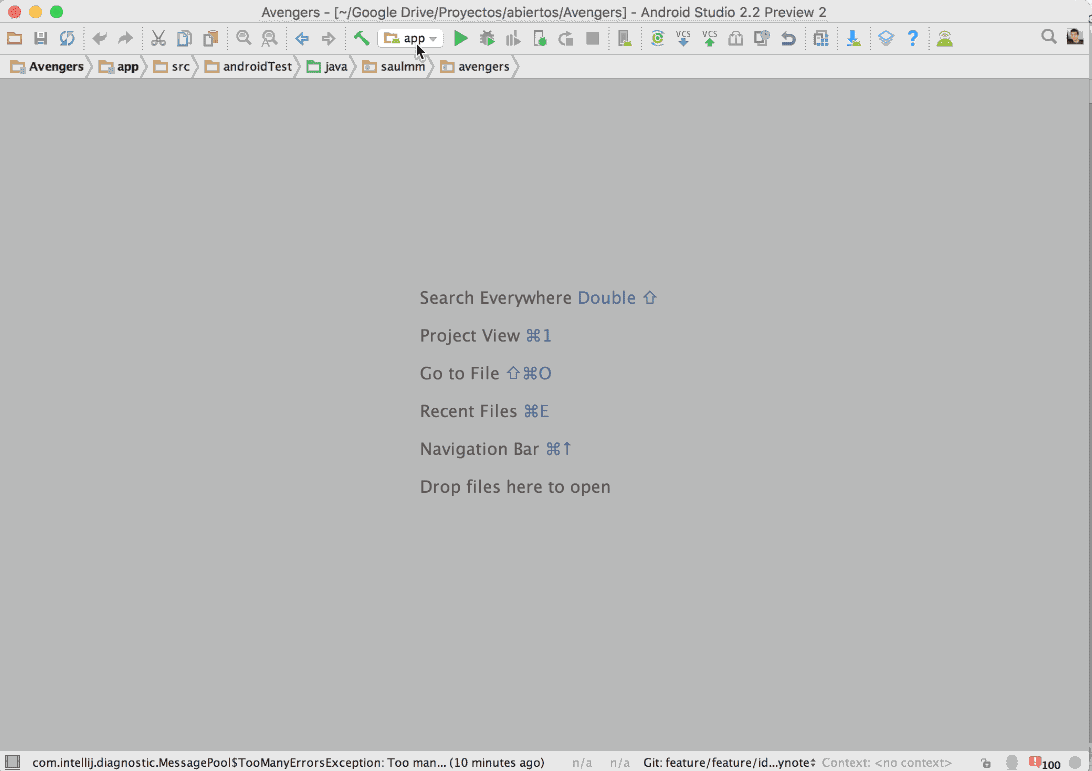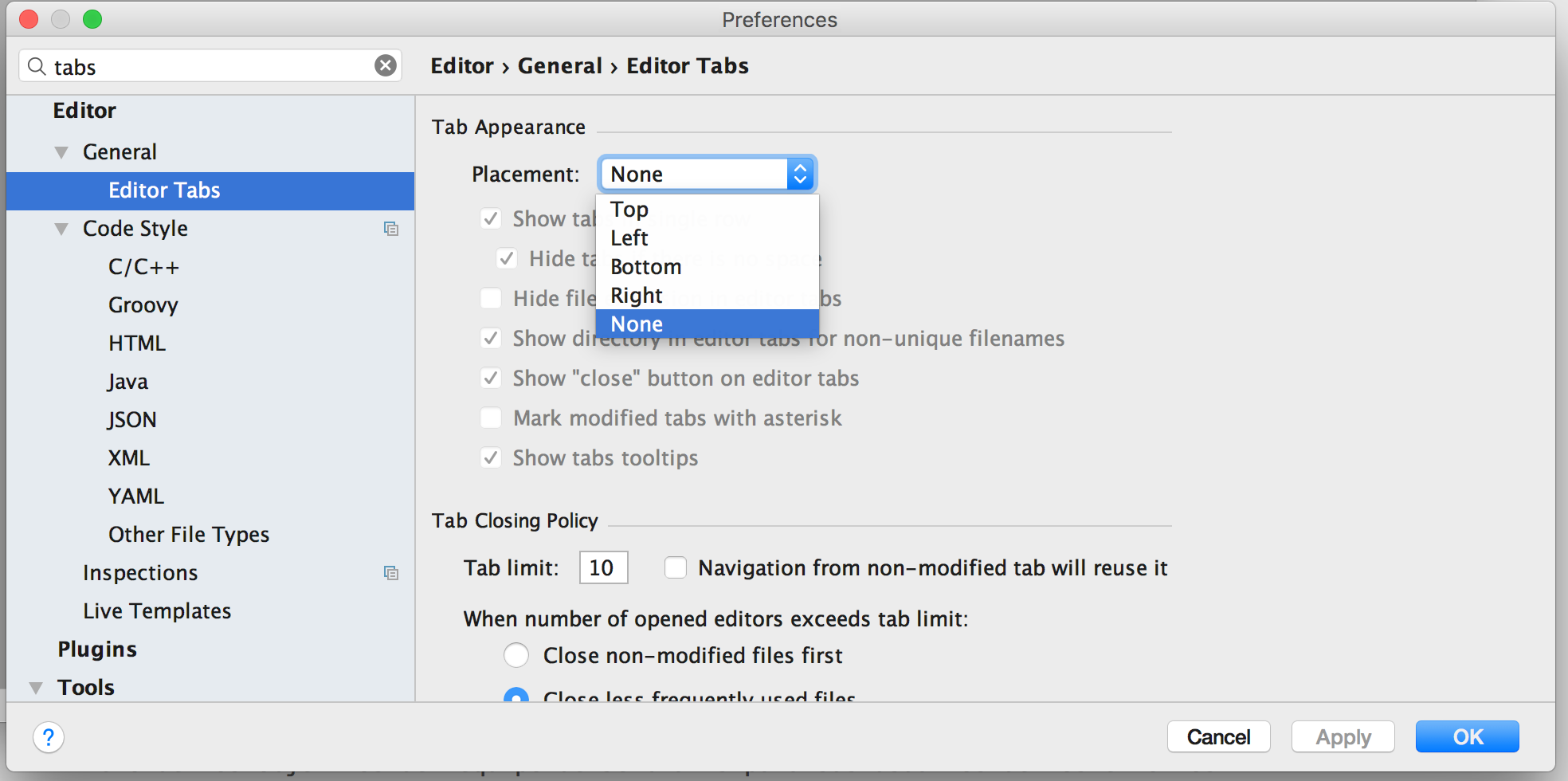英文来源: The powerful Android Studio
作者: Saúl Molinero(@saulmm),感谢作者对本篇文章的翻译授权。
译者: D_clock爱吃葱花
校对: 汤涛(就职于海豚浏览器,微信公众号AndroidTrending管理员)、Yasic(电子科技大学在校大学生,Diycode社区管理员)
Android Studio 作为 Android 开发的官方工具已经有一段时间了。考虑到 IntelliJ IDEA 在开发过程中为编辑、调试、分析、重构等众多功能上提供了更高效的方式,为此,Android Studio 选择在 IntelliJ IDEA 的基础上进行开发。在最新版的 Android Studio 中(写这篇文章时,最新版本是2.2)包含了很多改进, 比如 新的 UI 编辑器、新的 ConstraintLayout 布局交互方式等。本文的关注点不在于涵盖这些新特性。这次,我想介绍一些自己平时经常使用的 Android Studio 小技巧。这篇文章原本是我在Exfest’16 活动中的一篇演讲稿(没有PPT),正好有新的借口来写一篇新文章:) 。让我们开始吧!
声明
文中所有快捷键对应平台: Mac OS X 10.5+
文中展示快捷键操作的GIF图底部的那个绿框框,是一个很好用的插件,叫Presentation Assistant,对用于演示和结对编程是很棒的:)。
杂项
避免自动显示Logcat窗口
在运行应用的时候,最好禁止展开 Android Monitor 窗口(因为在运行配置中默认是展开的)。为此,可以在我们当前的 Project 中,选择 Edit Configurations -> Android Application -> Miscellaneous 路径,关掉下面的勾选。

不显示 Tab
正如 Hadi Hadiri 在他的文章中明确提到,使用这些 Tab 可能导致以下麻烦:丢失上下文,消耗宝贵的编辑空间,并且这些标签需要使用触控板或鼠标交互。如果这些 Tab 对你来说没有什么用处,可以到 settings -> editor -> tabs 设置中,将 Placement 属性设置为 None。

IntelliJ IDEA 不需要使用标签也能高效地在代码间进行切换。
导航
JetBrains团队的目标之一是鼓励用户尽可能减少使用鼠标的频率。有大量高效的操作命令,可以让你的双手在不需要离开键盘的情况下,变得更加高效精准。








 最低0.47元/天 解锁文章
最低0.47元/天 解锁文章















 621
621











 被折叠的 条评论
为什么被折叠?
被折叠的 条评论
为什么被折叠?








